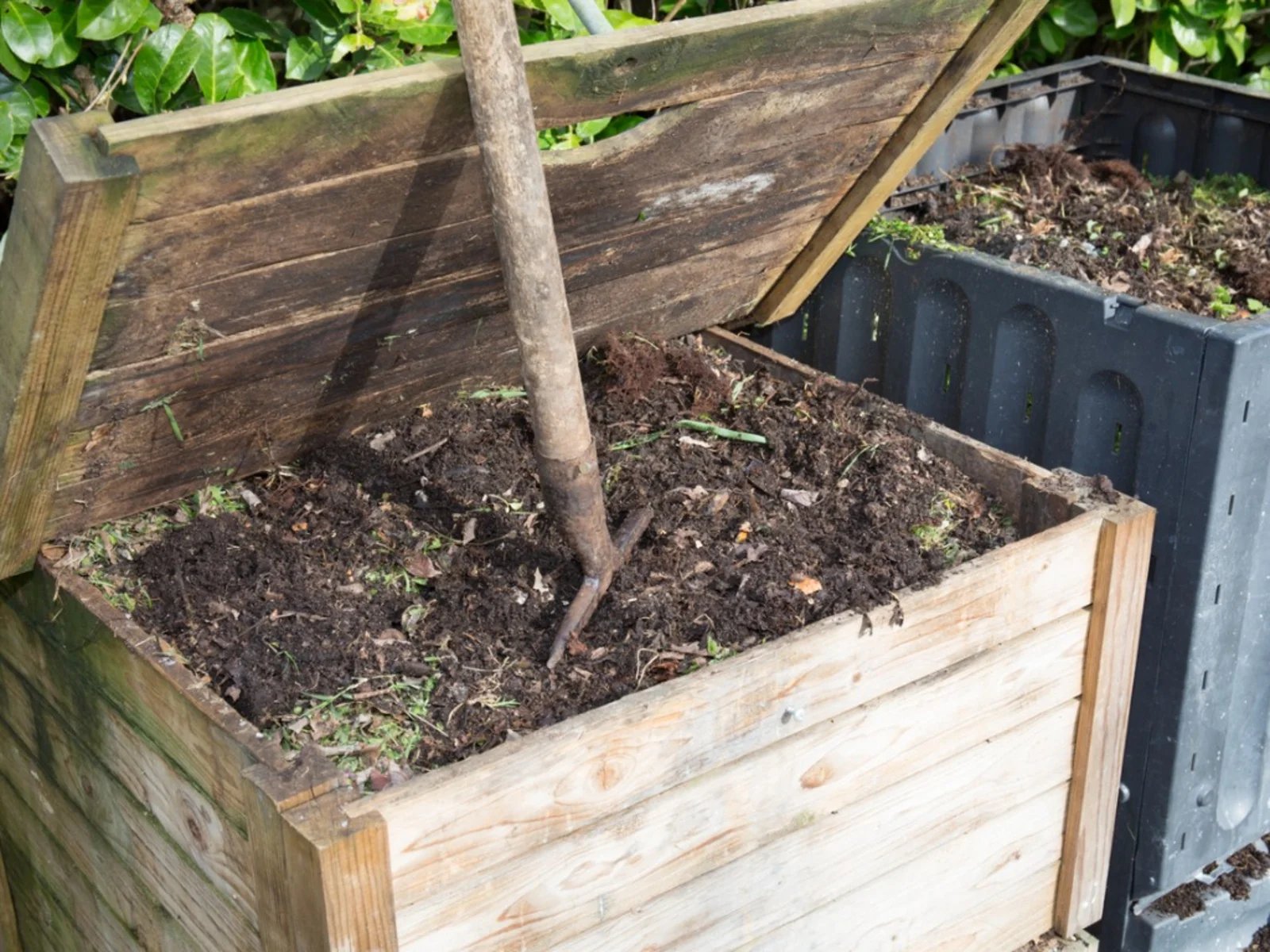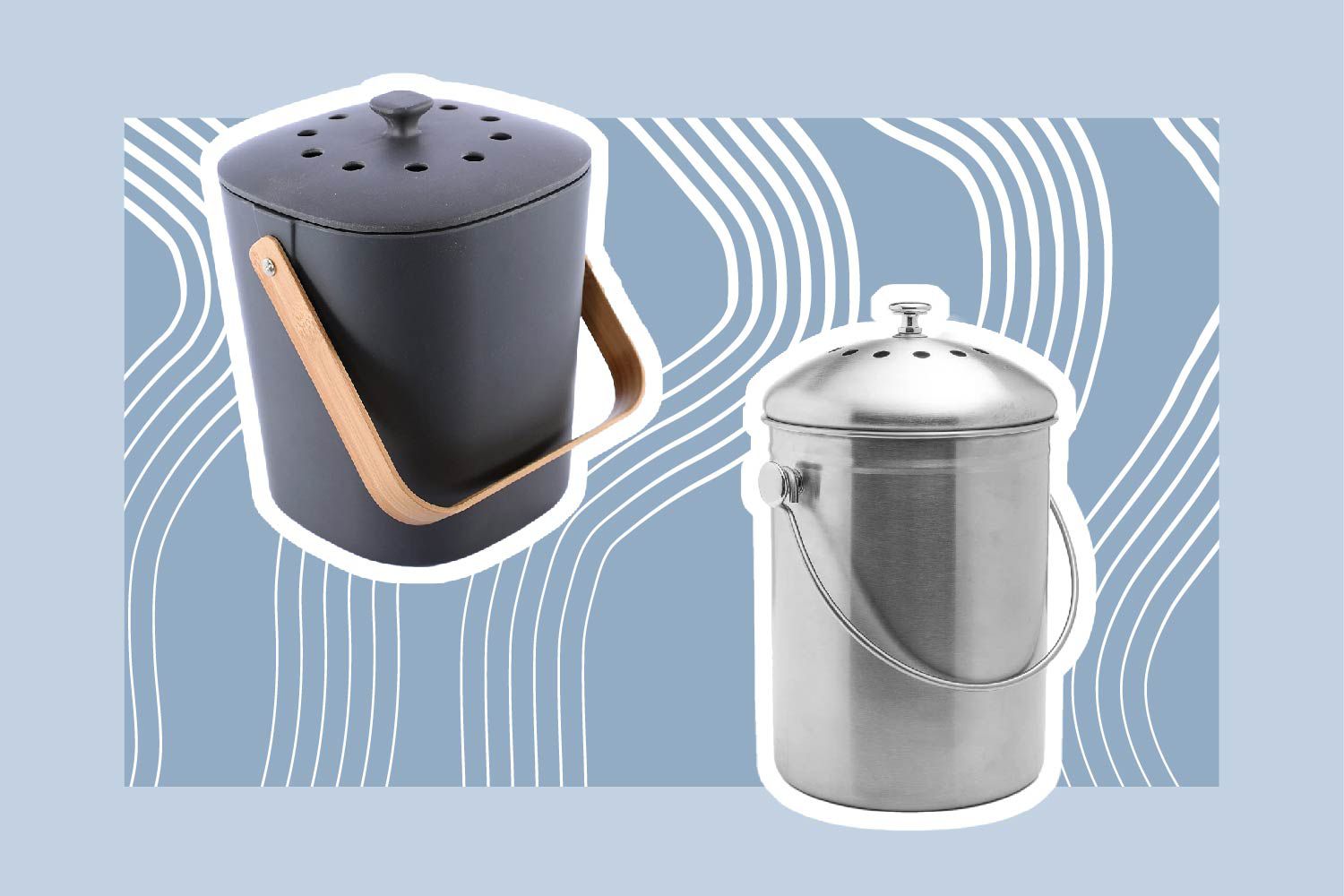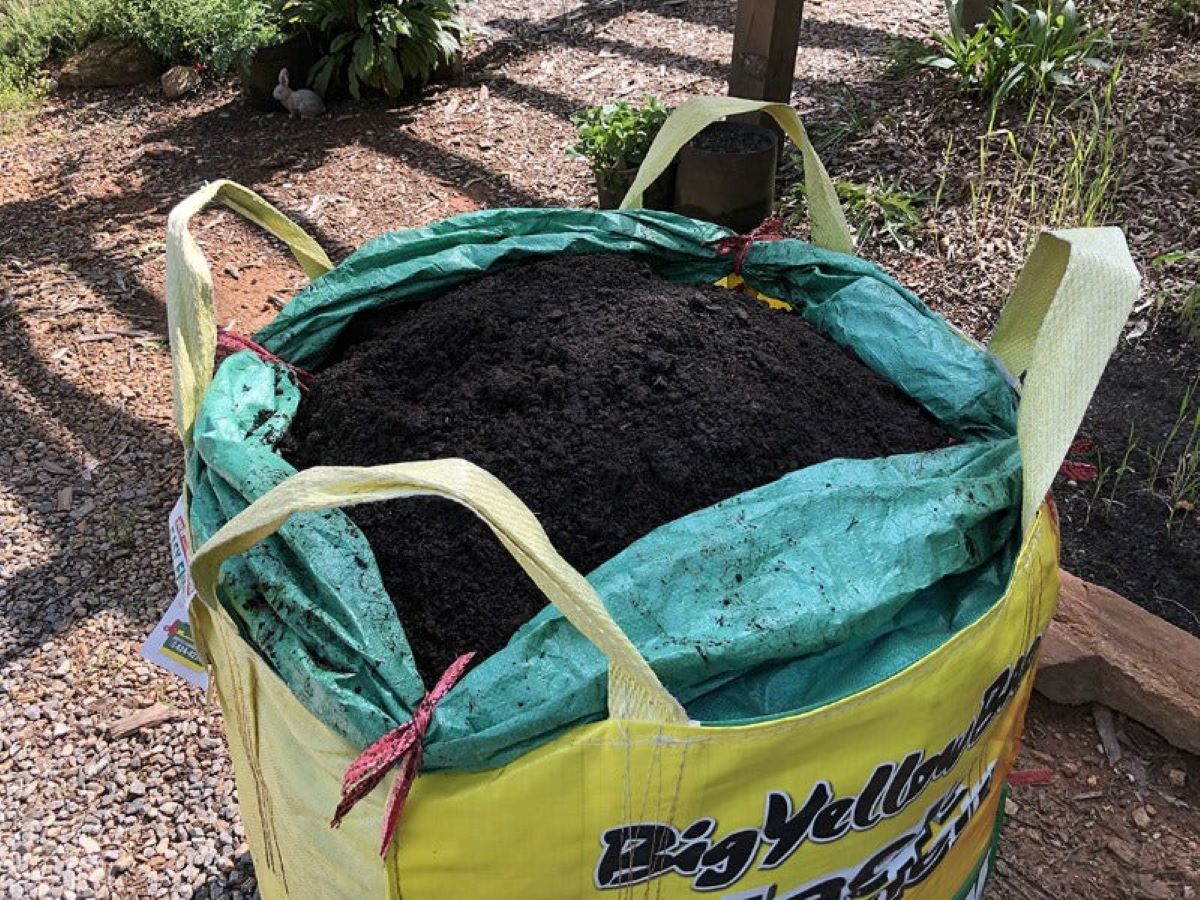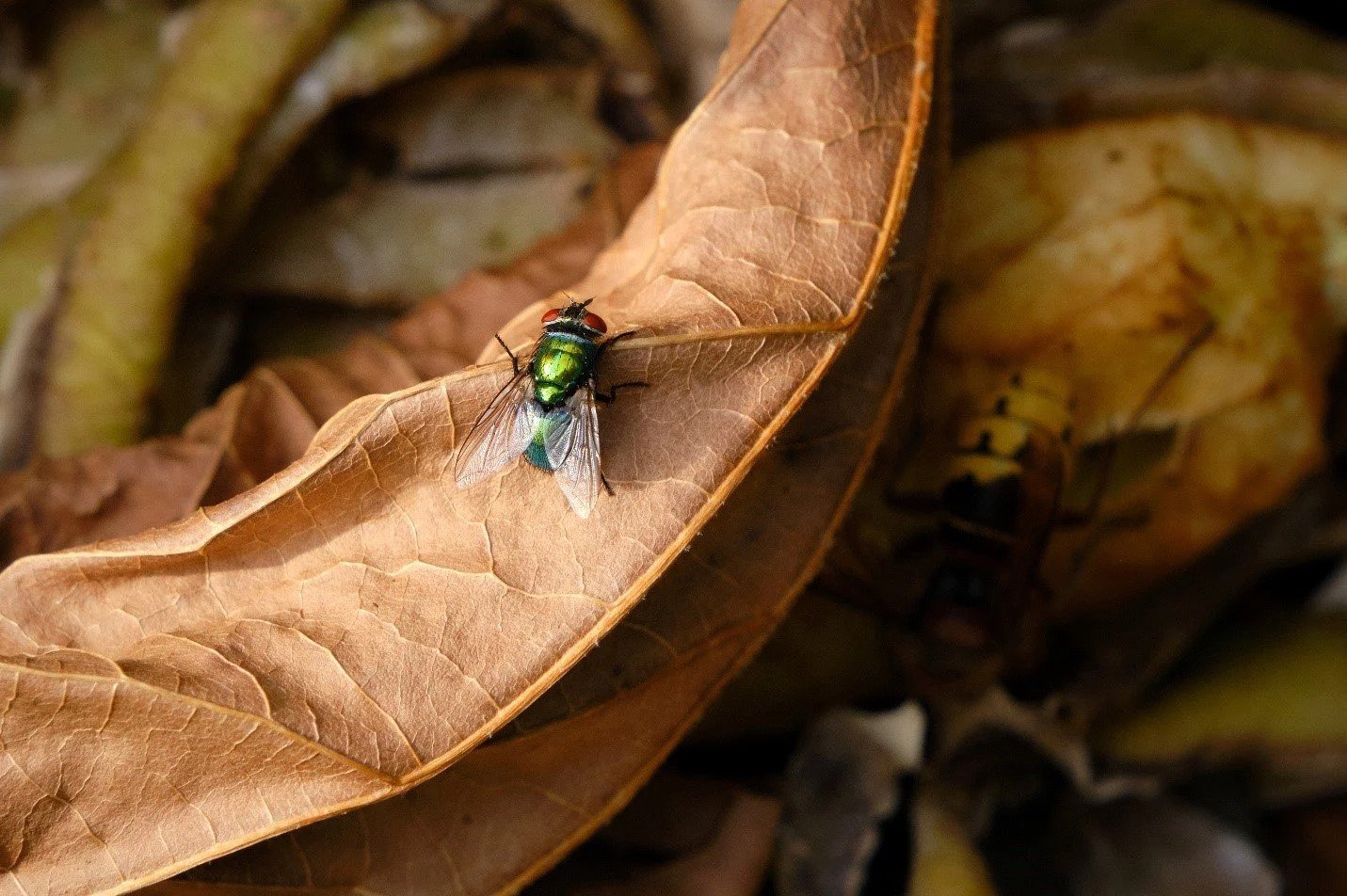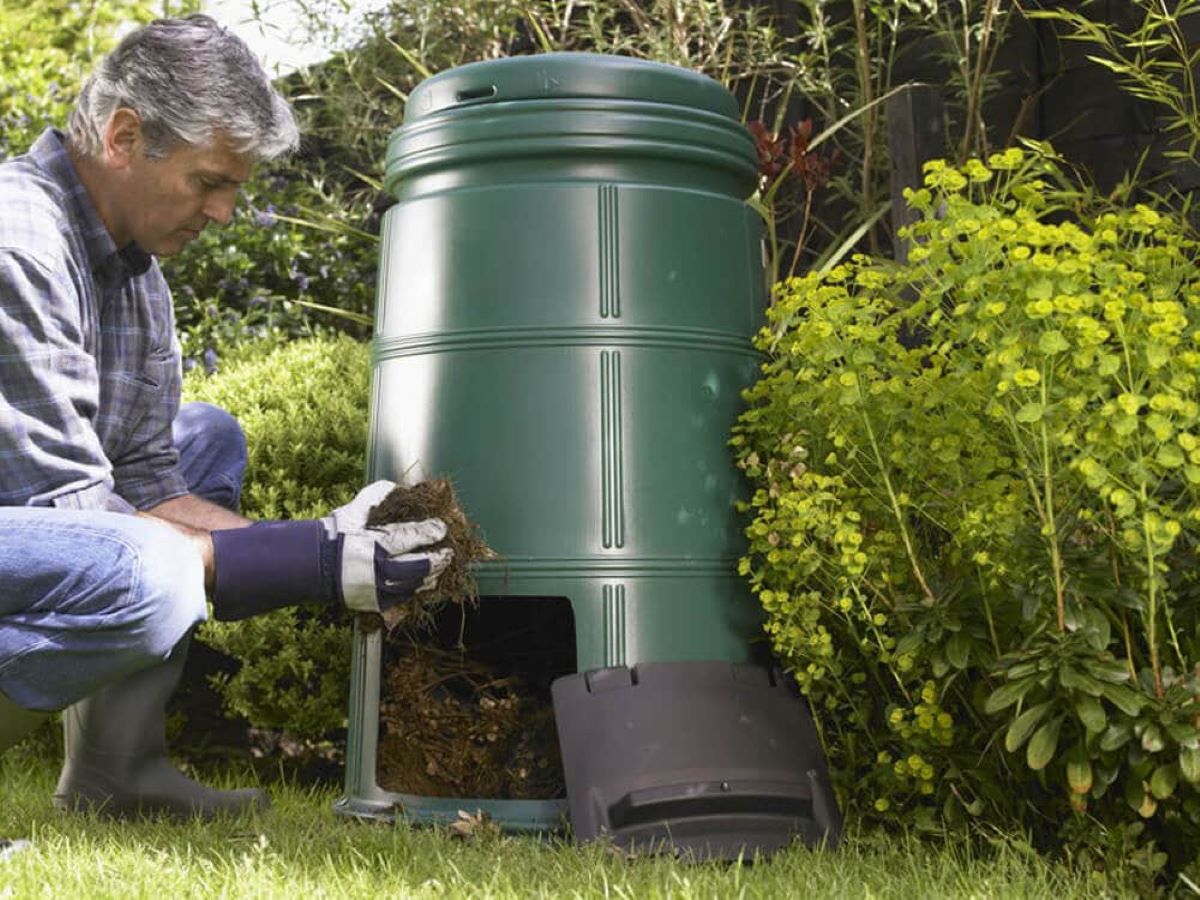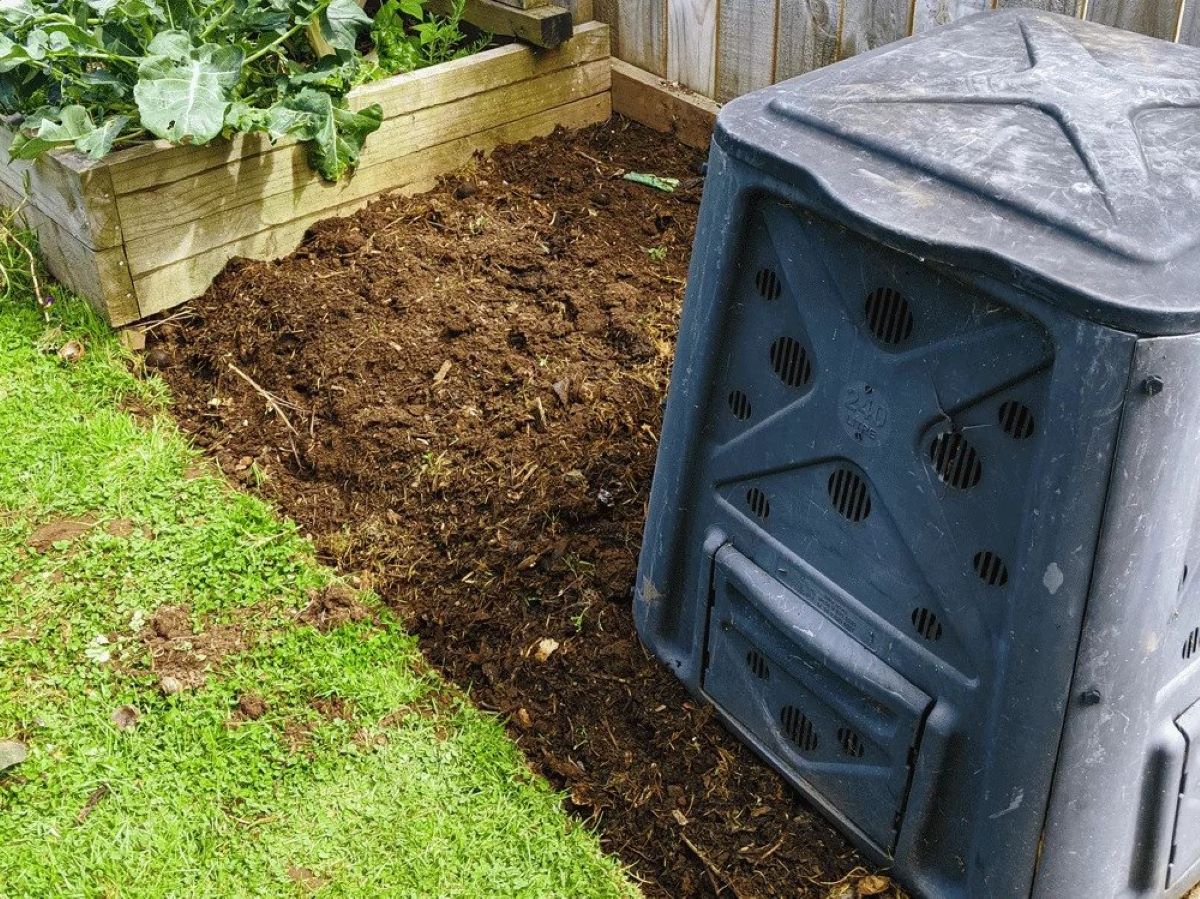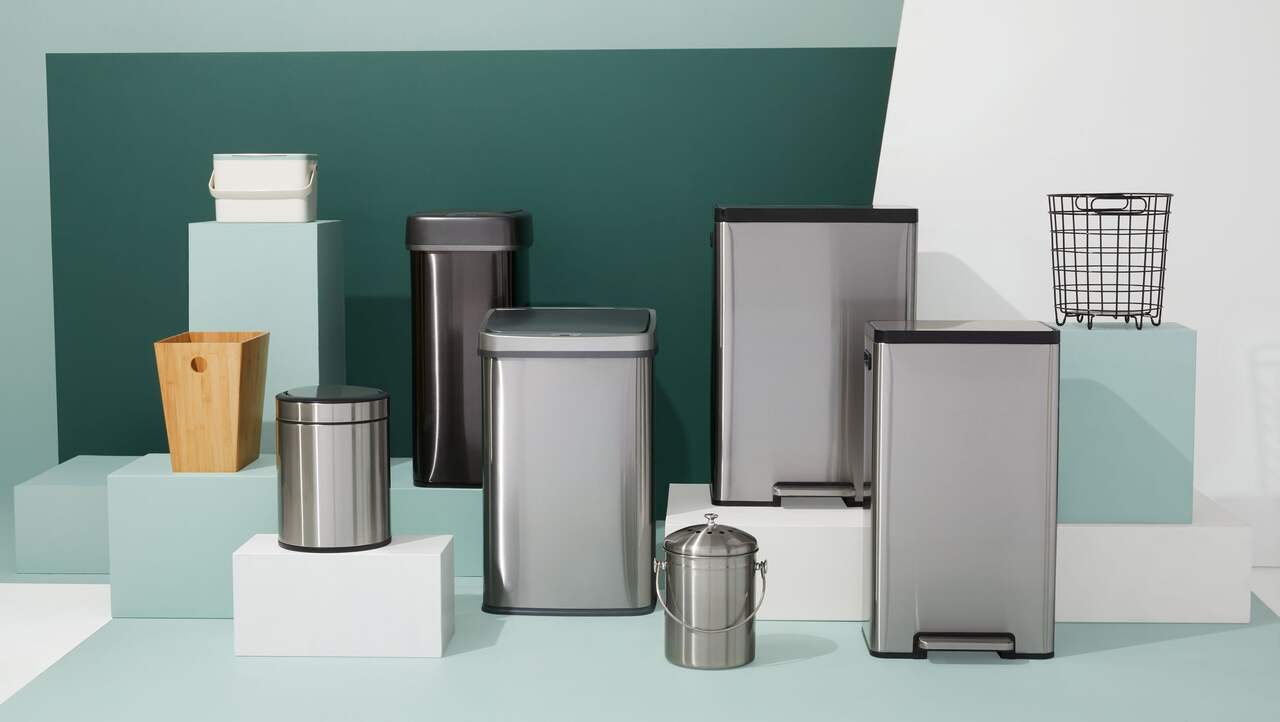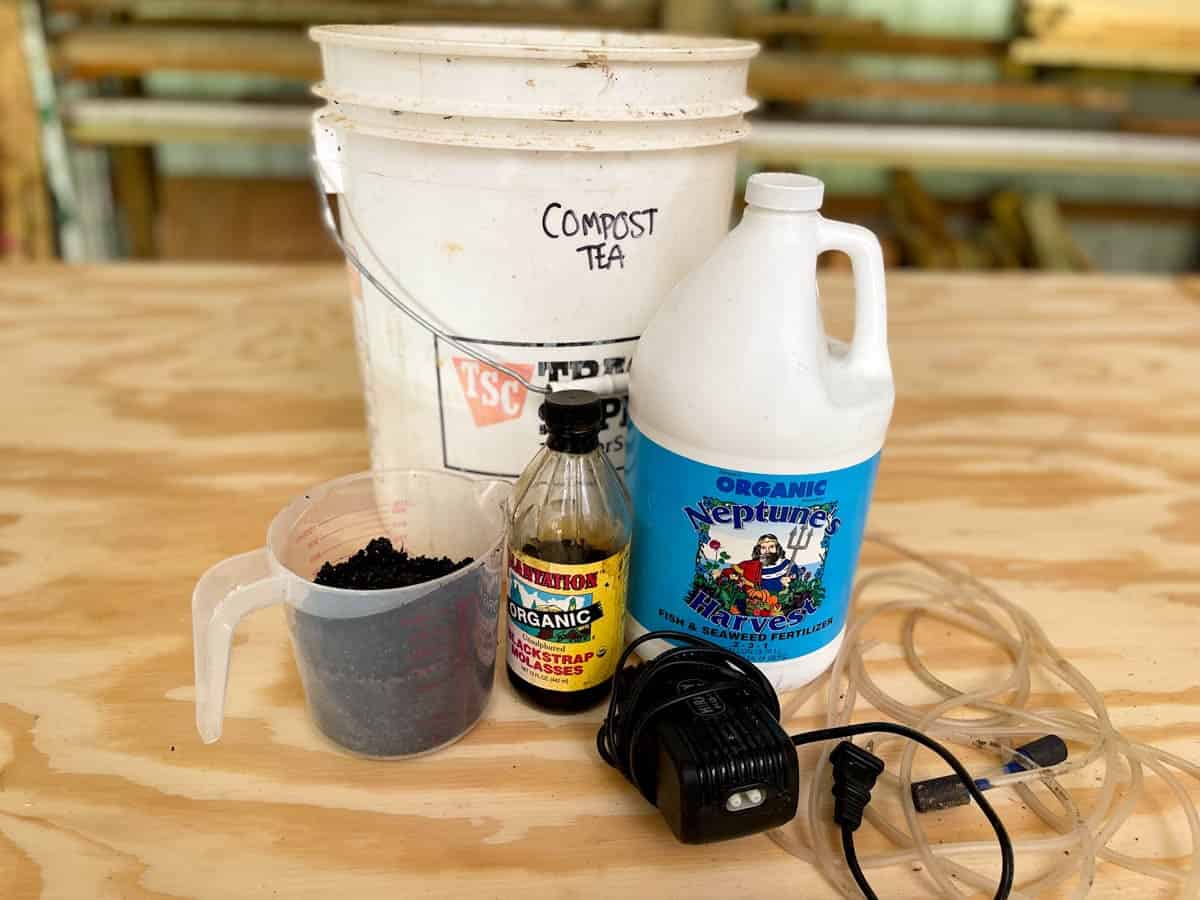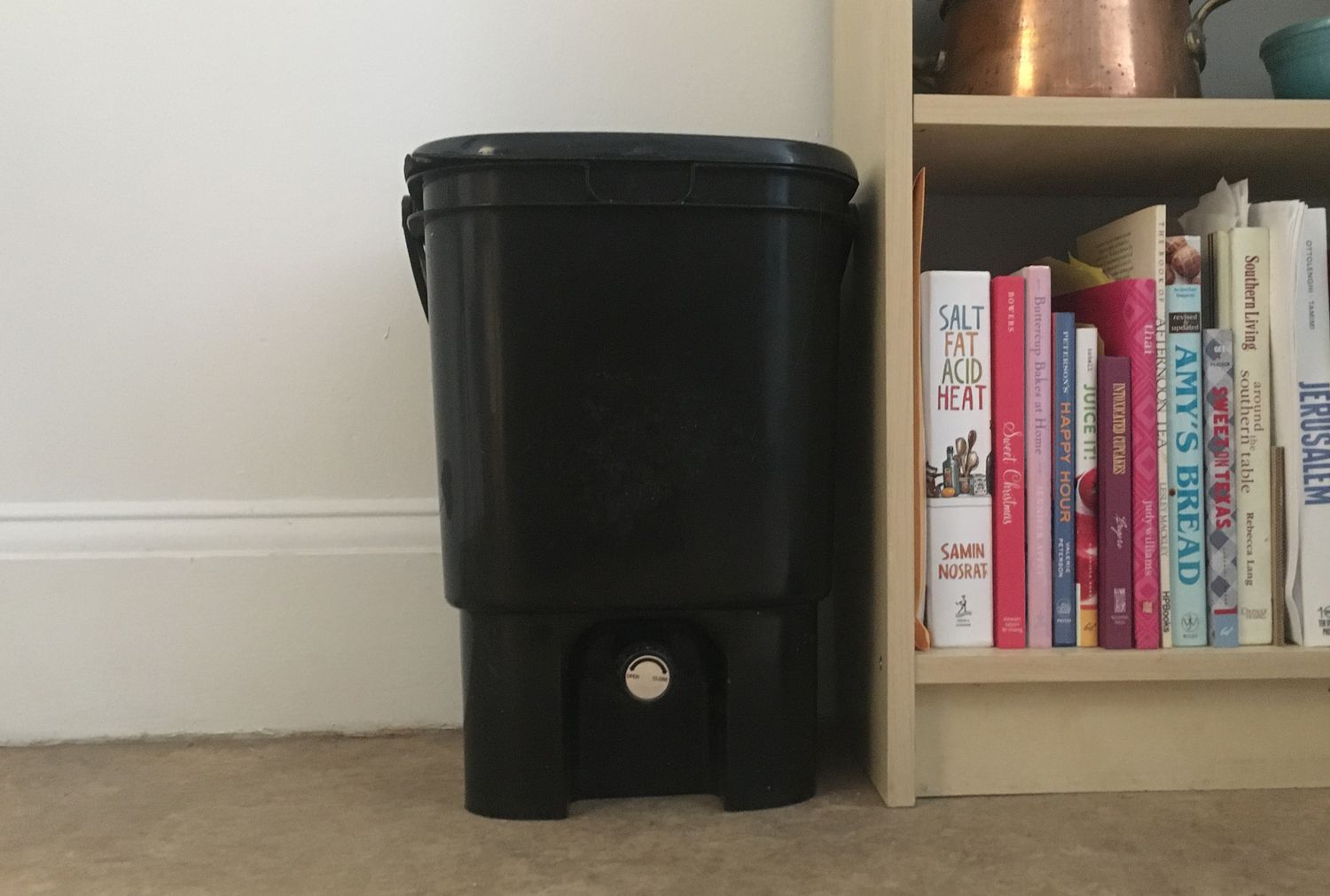Home>Gardening Basics>How Much Are Compost Bins


Gardening Basics
How Much Are Compost Bins
Modified: January 22, 2024
Find the best deals on tools and equipment for composting bins. Discover how much compost bins cost and start your sustainable gardening journey today.
(Many of the links in this article redirect to a specific reviewed product. Your purchase of these products through affiliate links helps to generate commission for Chicagolandgardening.com, at no extra cost. Learn more)
Table of Contents
Introduction
Composting is an environmentally-friendly practice that not only reduces waste but also creates nutrient-rich soil for gardening. Compost bins play a vital role in this process, providing a designated space to decompose organic material effectively. Whether you have a small backyard, a balcony garden, or even just a countertop space, there is a compost bin suitable for your needs.
Composting has gained popularity in recent years as people become more conscious of sustainability and reducing their carbon footprint. By diverting organic waste from landfills, composting helps to reduce greenhouse gas emissions and conserve landfill space. Additionally, composting enriches the soil, improves its structure, and promotes healthier plant growth.
When it comes to compost bins, there are several options available on the market, each with its own unique features and functions. Outdoor compost bins are ideal for larger spaces, while indoor composters are suitable for those with limited space or living in apartments. If you want to take composting to the next level, worm composting bins offer a more advanced and efficient way to decompose organic waste.
Choosing the right compost bin can seem overwhelming with so many options available, but considering factors such as size, ventilation, durability, and ease of use can help you make an informed decision. Additionally, compost bins come in a wide range of prices, so finding one that fits your budget is achievable.
In this article, we will explore the different types of compost bins and their benefits, discuss factors to consider when choosing a compost bin, and provide an overview of the price range to help you find the perfect compost bin for your needs.
Benefits of Composting
Composting offers a multitude of benefits for both the environment and gardeners. Here are some key advantages of composting:
- Waste Reduction: By composting organic waste, such as kitchen scraps and yard trimmings, you can divert a significant amount of waste from ending up in landfills. This helps to reduce methane gas emissions, as organic waste decomposes anaerobically in landfills and contributes to climate change.
- Nutrient-Rich Soil: Compost is often referred to as “black gold” because of its rich nutrient content. It improves the structure and fertility of soil, providing essential nutrients for plants to thrive. Using compost in your garden can lead to healthier plants, increased productivity, and reduced dependency on synthetic fertilizers.
- Water Retention and Erosion Control: Compost helps soil retain moisture, reducing the need for frequent watering. It also improves soil drainage and prevents erosion, especially in areas prone to heavy rainfall or erosion.
- Improves Soil Health: Compost enhances soil structure by improving its texture and ability to hold nutrients and oxygen. It encourages beneficial microbial activity, which aids in breaking down organic matter and releasing nutrients for plant uptake.
- Reduces Chemical Dependency: Composting allows you to reduce or eliminate the use of chemical fertilizers and pesticides in your garden. By using compost as a natural fertilizer, you can create a healthier and more sustainable growing environment.
Embracing composting not only contributes to a greener environment but also supports a more sustainable and organic approach to gardening. It is a simple and effective way to recycle organic waste and create a valuable resource for your garden.
Types of Compost Bins
There are various types of compost bins available, each designed to suit different spaces and composting methods. Here are the most common types:
- Outdoor Compost Bins: These bins are typically larger in size and are ideal for those with ample outdoor space. They come in different styles, such as plastic bins, wooden bins, or wire mesh bins. Outdoor compost bins allow for larger quantities of organic waste and provide optimal conditions for decomposition, including airflow and drainage.
- Indoor Composters: These compost bins are perfect for those with limited outdoor space or living in apartments. They are compact in size and can be kept in a kitchen or closet. Indoor composters are designed to minimize odor and maintain a balance of moisture and airflow for efficient decomposition. They often have airtight lids or charcoal filters to control odor.
- Worm Composting Bins: Also known as vermiculture or worm bins, these specialized compost systems use worms to break down organic waste at a faster rate. Worm composting bins are typically smaller in size and can be used both indoors and outdoors. They require a specific type of worm, such as red wigglers, and need to be managed differently than traditional compost bins.
- DIY Compost Bins: For the budget-conscious or DIY enthusiasts, building a compost bin from scratch is a popular option. DIY compost bins can be made from repurposed materials such as wooden pallets, trash cans, or wire mesh. They offer customization and can be tailored to fit specific space requirements.
Each type of compost bin has its own advantages and considerations. It’s essential to choose a compost bin that aligns with your space availability, composting goals, and maintenance preferences.
Outdoor Compost Bins
Outdoor compost bins are a popular choice for those who have a backyard or garden space. They offer larger capacity, allowing you to compost a substantial amount of organic waste. Here are some types of outdoor compost bins:
- Plastic Bins: Plastic compost bins are lightweight, durable, and easy to assemble. They often have aeration holes or slots to promote airflow and drainage. Some models have removable doors or hatches for easy access to the composting material. Plastic bins are low-maintenance and suitable for beginners.
- Wooden Bins: Wooden compost bins are aesthetically pleasing and blend well with outdoor surroundings. They are usually made of rot-resistant wood, such as cedar or redwood, which can withstand outdoor conditions. Wooden bins often consist of multiple compartments, allowing for a continuous composting process. They can be more expensive but offer durability and a natural look.
- Wire Mesh Bins: Wire mesh bins, also known as compost cages, are made of galvanized wire mesh and are an affordable option. They are simple to assemble and offer excellent airflow, ensuring proper decomposition. Wire mesh bins may require additional support or lining to prevent compost spillage.
Outdoor compost bins benefit from exposure to natural elements, such as sunlight, rain, and outdoor microorganisms. It is essential to place the bin in a well-drained area with good airflow for optimal decomposition. Turning the compost periodically helps to aerate the pile and accelerate the decomposition process.
Remember to consider the size of the bin based on your composting needs. Larger bins are suitable for those with ample garden waste, while smaller bins are ideal for households with limited organic waste.
Indoor Composters
For those with limited outdoor space or living in apartments, indoor composters offer a convenient and odor-free solution. Indoor composters are designed to fit seamlessly into a kitchen or closet, allowing you to compost kitchen scraps and other organic waste without any hassle. Here are some types of indoor composters:
- Countertop Compost Bins: Countertop compost bins are compact in size and can sit on your kitchen counter or in a cabinet. They often have a tight-sealing lid and a carbon filter to control odor. Countertop bins are perfect for collecting food scraps and can be emptied into a larger outdoor compost bin or taken to a community composting facility.
- Bokashi Composting Systems: Bokashi composting is a fermentation process that allows you to compost a wider range of food waste, including meat, dairy, and citrus. Bokashi composters use special microorganisms to break down the organic waste in an airtight container. This method is odor-free and suitable for those who want to compost all their food waste indoors.
- Indoor Worm Composting Bins: Worm composting, also known as vermicomposting, can be done indoors using a specially designed worm composting bin. These bins are compact and usually stackable, allowing for vertical composting. They are populated with a specific type of worm called red wigglers, which efficiently convert organic waste into nutrient-rich vermicompost. Indoor worm composting bins are low odor and can be easily managed.
Indoor composters are designed to control odor and minimize fruit flies or other pests. They often feature airtight lids, carbon filters, or drainage systems. It’s crucial to follow the instructions provided with your indoor composter to maintain a healthy composting environment and ensure successful decomposition.
Indoor composting is a convenient way to reduce food waste and create nutrient-rich compost even in small spaces. It allows you to actively participate in composting without the need for outdoor resources.
Worm Composting Bins
Worm composting, also known as vermicomposting, is a specialized method of composting that utilizes worms to break down organic waste. It is a highly efficient and environmentally-friendly way to convert kitchen scraps and other organic materials into nutrient-rich compost. Here are some key aspects of worm composting bins:
- Types of Worms: Red wigglers, Eisenia fetida, are the most commonly used worms for vermicomposting. These worms are highly efficient in breaking down organic matter and can thrive in the controlled environment of a worm composting bin.
- Bin Design: Worm composting bins are specifically designed to provide an ideal habitat for worms. They are typically made from plastic or durable materials and come in various sizes, depending on the amount of organic waste you plan to compost. The bins have multiple layers or trays for vertical composting and drainage systems to prevent excess moisture.
- Feeding the worms: Worms in a composting system require a balanced diet. They thrive on a diet of fruit scraps, vegetable trimmings, coffee grounds, tea leaves, and other organic materials. However, avoid feeding them citrus fruits, oily foods, meat, dairy products, and highly acidic or salty foods.
- Maintenance: Worm composting bins require regular maintenance to ensure the health and productivity of the worms. This includes monitoring moisture levels, adding bedding materials such as shredded paper or dry leaves, and periodically harvesting finished compost by separating it from the worms.
Worm composting bins are suitable for indoor and outdoor use. Indoor bins are typically smaller and can be kept in a kitchen or basement, while outdoor bins can accommodate larger amounts of organic waste.
Worm composting is an efficient way to convert kitchen scraps into nutrient-rich castings or vermicompost. The resulting compost can be used in gardens, as potting mix, or to enrich the soil for potted plants. It is important to note that worm composting requires attention to detail and proper management to create a healthy and productive environment for the worms.
Factors to Consider When Choosing a Compost Bin
Choosing the right compost bin is essential to ensure successful composting and convenience in managing organic waste. Here are some important factors to consider before making a decision:
- Space: Evaluate the available space you have for composting. Outdoor compost bins require a suitable location in your backyard, while indoor composters should fit comfortably in your kitchen or closet.
- Capacity: Consider the amount of organic waste you generate and select a compost bin with a capacity that can accommodate your needs. Larger bins are suitable for those with more garden waste or larger households, while smaller bins work well for individuals or small families.
- Aeration and Drainage: Proper airflow and drainage are crucial for successful composting. Look for compost bins with adequate aeration or ventilation systems to allow oxygen into the compost pile. Ensure the bin also has proper drainage to prevent excessive moisture buildup.
- Maintenance: Consider the level of maintenance you are willing to invest in. Some compost bins require more frequent monitoring and turning of the compost pile, while others require minimal maintenance. Choose a bin that aligns with your schedule and composting goals.
- Durability: Compost bins should be durable enough to withstand the outdoor elements or regular use. Look for bins made from sturdy materials such as recycled plastic or rot-resistant wood. Consider the longevity of the bin to ensure you get the best value for your investment.
- Odor Control: If you are composting indoors or concerned about odors, consider bins with features like airtight lids or odor-absorbing filters. These features help to minimize odors and keep your composting area smelling fresh.
It’s crucial to assess your specific composting needs and preferences to find a bin that suits you best. Researching different models and reading customer reviews can provide valuable insights into the performance and functionality of various compost bins.
Remember, selecting the right compost bin is key to a successful composting journey and maximizing the benefits of recycling your organic waste.
Price Range of Compost Bins
The price of compost bins can vary depending on factors such as size, material, design, and additional features. Here is a general overview of the price range you can expect when shopping for a compost bin:
Low-End Range: Entry-level compost bins typically range from $20 to $50. These are often smaller in size and made from lightweight plastic or basic wire mesh. While they may lack some advanced features, they still fulfill the basic function of composting organic waste.
Mid-Range: Compost bins in the mid-range price category, priced between $50 and $100, offer a balance between affordability and better quality. In this range, you can find a variety of options, including larger plastic bins, wooden bins with multiple compartments, and some indoor compact composters with odor control features.
High-End Range: Premium compost bins, priced above $100, often have advanced features, durable construction, and larger capacity. Wooden composters made from rot-resistant wood, high-quality stainless steel bins, or specialized indoor worm composting systems are among the higher-priced options.
It’s worth noting that DIY compost bins can be a cost-effective alternative, as you can repurpose materials or build your own composting system using readily available resources.
When considering the price of a compost bin, it is essential to weigh the features, durability, and overall value it offers. Investing in a well-designed and durable compost bin can benefit you in the long run by providing efficient composting and lasting for several years.
Additionally, keep in mind that while the initial cost may seem significant, the savings in reduced waste disposal and the value of nutrient-rich compost for your garden can outweigh the upfront investment.
Where to Buy Compost Bins
Compost bins can be purchased from various sources, both online and offline. Here are some popular options where you can buy compost bins:
- Garden Supply Stores: Local garden supply stores often carry a wide range of compost bins, including outdoor composters, indoor composters, and worm composting bins. Visit your nearest garden supply store to see the bins in person and get expert advice on choosing the right one for your needs.
- Home Improvement Stores: Home improvement stores like Home Depot, Lowe’s, or Ace Hardware may have a selection of compost bins in their gardening section. These stores offer a variety of composting options at different price points.
- Online Retailers: Online retailers such as Amazon, eBay, or Walmart.com offer a wide range of compost bins that can be conveniently delivered to your doorstep. Reading customer reviews and comparing prices on these platforms can help you make an informed decision.
- Specialty Composting Retailers: There are specialty retailers that focus specifically on composting and sustainable gardening. These online stores often offer a curated selection of high-quality compost bins, composting accessories, and educational resources to support your composting journey.
- Community Composting Programs: Some municipalities or community organizations offer compost bins for sale through their composting programs. These programs may also provide educational resources and support for successful composting.
- Local Farmers Markets or Eco Events: Farmers markets or eco-centered events in your area may have vendors selling compost bins. These events provide an opportunity to see different types of bins and discuss composting with experts.
Before purchasing a compost bin, it’s beneficial to do some research, read reviews, and compare prices to ensure you’re getting the best deal. Additionally, check for warranty information and consider the seller’s return policy in case you encounter any issues.
Wherever you choose to buy your compost bin, remember to consider factors such as size, design, material, and functionality to ensure it meets your composting needs and fits within your budget.
Conclusion
Composting is a sustainable and rewarding practice that allows you to reduce waste, create nutrient-rich soil, and contribute to a greener environment. Choosing the right compost bin is essential to ensure successful composting and convenience in managing organic waste.
We explored various types of compost bins, including outdoor compost bins, indoor composters, and worm composting bins. Outdoor compost bins are ideal for those with ample outdoor space, while indoor composters and worm composting bins cater to those with limited space or who prefer composting indoors.
Factors to consider when choosing a compost bin include space availability, capacity, aeration and drainage, maintenance requirements, durability, and odor control. By selecting a bin that aligns with your composting goals and preferences, you can create a healthy and efficient composting environment.
The price range of compost bins varies depending on factors such as size, material, design, and features. It’s important to weigh the features and durability when considering the price and choose a bin that offers the best value for your investment.
Compost bins can be purchased from various sources, including garden supply stores, home improvement stores, online retailers, specialty composting retailers, community composting programs, and local farmers markets. Researching different options and comparing prices can help you find the right compost bin for your needs.
Embracing composting and finding the perfect compost bin allows you to actively participate in reducing waste, nurturing the soil, and contributing to a more sustainable future. So, take the first step towards composting and enjoy the benefits of creating nutrient-rich compost for your garden or plants.
